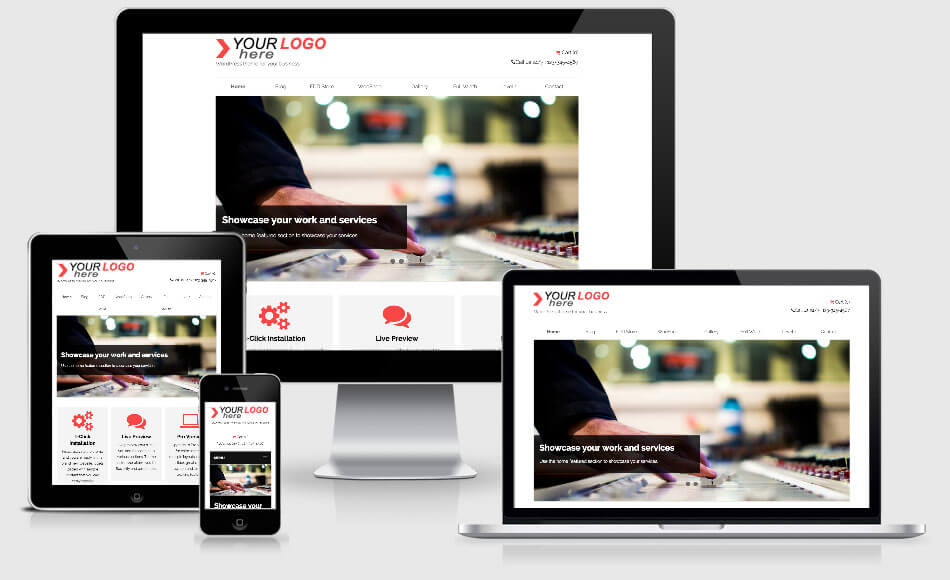
Incorporating creativity into web design development is an accomplished skill. Technical and innovative capability comes with knowledge, hard work, and practice. Building a successful website considers more than just functionality but the dose of creativity and uniqueness. A web design agency in Chicago will elaborate on this subject by providing tips for boosting your creative side.
1. Observe the trends
Generally, trends rule web design. The dominant role of trends is borne out by the expansion of new technologies and domains. For instance, the increased use of smartphones compels designers to develop mobile-friendly sites. The same is when it comes to the visual appearance of the website background. The modern approach is to integrate dark mode background instead of the recently popular white. Users nowadays prefer dark background as it appears easy and comforting for the eyes.
When users’ behavior and habits change and a new trend emerges, web developers weave these new alternatives into the design.
Following trends doesn’t mean that every current style is appropriate for every business. Sometimes obeying current tendencies won’t be productive for the specific industry. Observing a new mode is necessary but adopting novelties requires perspicacity whether they are obedient to the target audience and desirable results.
While perceiving new trends, research and investigate what is out of consideration and events related to emerged trends.
2. Be community involved
Web designers must hold to the general rules and norms of the community to understand and apply the standards. The regional design might be different from global in some aspects. An example of such differences is a logo design that corresponds with distinct ethnicity. Logo communication has to address locals which obliges the designer to understand and be a part of the local community. Joining the online designer community will keep you informed of the latest trends while providing constructive feedback and critiques.
3. Participation in competitions
Competition motivates designers to improve their creativity and create something less ordinary. The uniqueness of competition inspires designers to produce authentic product. Practice without inspiration factor results in an average design that lacks dynamics. Contest stimulates designers to rethink and compose different ideas by studying and brainstorming themes and topics. Watch other people’s creativity for inspiration.
4. Rethink your color choices
Refining your color selection makes a significant difference in website look. Many beginners in web design integrate infant color combinations in an attempt to grab users’ attention. As experts, we advise using natural colors for obtaining visitors’ curiosity. Natural tones are more eye-appearing rather than unusual ones. Users prefer shades of their surroundings for their soothing effect in interaction.
5. Feel open to exploring social media networks
Pinterest is an excellent place for finding new intriguing ideas. Other social platforms such as Instagram, Tumblr, Ello, Medium, and DeviantArt are the source of inspiration for designers. These networks are places where you can find projects of eminent designers and design gurus. Images and posts on those sites are abundant although with the options to categorize them by your interests.
6. Seek inspiration in the real world
Besides the fact that the internet is opulent with inspiring content, sometimes you can have the feeling of cyberspace satiety. Inspiration can be found in the outside world as business trademarks, logos, banners, and other features. Thinking and observing outside the workstation can refresh and boost creativity.
7. Play around and explore your precious work
You can find inspiration in earlier work as an inexperienced designer. Old and undeveloped styles might be immature but creative. Maybe your old work was brilliant before you fall into monotonous mode. Seek inspiration in former design with a critical approach. The improvement you have accomplished from when you first started may also be an inspiration for further upgrading. Redesign of old concepts is an adequate way to achieve new ones. Every successful design, even the innovative one, is an applied combination of things already known and seen.
8. Experience and studying
Constant work and learning are the keys to good practice. Besides your formal education as a designer, self-education in various sources and subjects is as important. Consistent learning will keep your mind and eyes open for suggestions moreover creativity will inevitably prosper. Making experimental projects or free work for certain clients can be a great way to explore and practice without restrictions. This method allows you to design with freedom in creativity.
9. Exit your comfort zone
Accepting projects outside your comfort zone and usual work is a great stimulant for expanding your skills. Challenging projects might force you to push harder in discovering new solutions. Inventing new ways is a process that recruits both technical and creative skills.
Final Thoughts
The above suggestions for improving creativity might not work equally for every person. Explore and find which way best stimulates your creativity. Learning and applying new designing techniques, methods and technology will inspire ideas that will fully fledge with time. A constant lookout for new ideas is the only way in attaining creative design.








